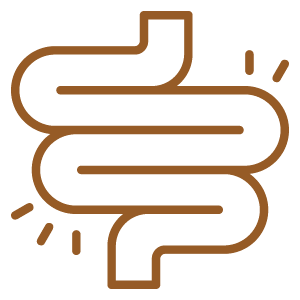Bernstein, A. M., Titgemeier, B., Kirkpatrick, K., Golubic, M., & Roizen, M. F. (2013). Major cereal grain fibers and psyllium in relation to cardiovascular health. Nutrients, 5(5), 1471-1487. https://doi.org/10.3390/nu5051471
Berry, N. M., Robinson, M. J., Bryan, J., Buckley, J. D., Murphy, K. J., & Howe, P. R. C. (2011). Acute effects of an Avena sativa herb extract on responses to the Stroop Color-Word test. Journal of Alternative and Complementary Medicine, 17(7), 635-637. https://doi.org/10.1089/acm.2010.0450
Estrada, A., Yun, C. H., Van Kessel, A., Li, B., Hauta, S., & Laarveld, B. (1997). Immunomodulatory activities of oat beta-glucan in vitro and in vivo. Microbiology and Immunology, 41(12), 991-998. https://doi.org/10.1111/j.1348-0421.1997.tb01959.x
Hardin, K. R. (2010). Wild as the Day is Long: The Restorative Medicine of Avena. Retrieved from http://bearmedicineherbals.com/wild-as-the-day-is-long-the-restorative-medicine-of-avena.html
Hoffmann, D. (2003). Medical Herbalism: The Science and Practice of Herbal Medicine. Healing Arts Press.
La Vieille, S., Pulido, O. M., Abbott, M., Koerner, T. B., & Godefroy, S. (2016). Celiac Disease and Gluten-Free Oats: A Canadian Position Based on a Literature Review. Canadian Journal of Gastroenterology & Hepatology, 2016, 1870305. http://doi.org/10.1155/2016/1870305
North American Society for the Study of Celiac Disease (NASSCD). (2017). Commentary: Safety of Adding Oats to a Gluten-free Diet for Patients with Celiac Disease: Systematic Review and Meta-analysis of Clinical and Observational Studies. http://www.nasscd.org/content.asp?contentid=141
McIntyre, A. (2019). The complete herbal tutor: The definitive guide to the principles and practices of herbal medicine. Aeon.
Pinto-Sánchez, M. I., Causada-Calo, N., Bercik, P., Ford, A. C., Murray, J. A., Armstrong, D., … Green, P. (2017). Safety of Adding Oats to a Gluten-free Diet for Patients With Celiac Disease: Systematic Review and Meta-analysis of Clinical and Observational Studies. Gastroenterology, 153(2), 395-409.e3. https://doi.org/10.1053/j.gastro.2017.04.009
Winston, D. (2019). Adaptogens: Herbs for strength, stamina, and stress relief (2nd ed.). Healing Arts Press.
Wong, R. H., Howe, P. R., Coates, A. M., Buckley, J. D., & Berry, N. M. (2013). Chronic consumption of a wild green oat extract (Neuravena) improves brachial flow-mediated dilatation and cerebrovascular responsiveness in older adults. Journal of Hypertension, 31(1), 192-200. https://doi.org/10.1097/HJH.0b013e32835b04d4
















